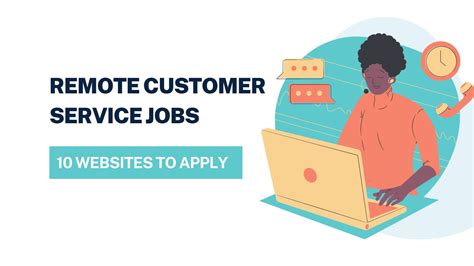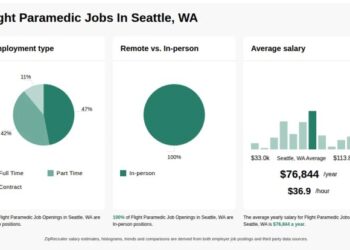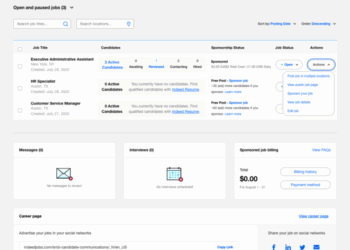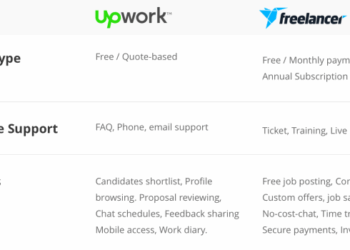Embark on a journey into the world of remote customer service jobs hiring now, where opportunities abound and careers await those ready to take the plunge. Explore the benefits, challenges, and essential skills needed to excel in this dynamic field.

Overview of Remote Customer Service Jobs
Remote customer service jobs refer to positions where individuals provide customer support and assistance from a location outside of a traditional office setting, often from their own homes. This setup allows employees to communicate with customers via phone, email, chat, or other online platforms without the need to be physically present in a specific office.Working remotely in customer service roles offers various benefits, both for employees and employers.
For workers, it provides flexibility in terms of work hours and location, allowing them to better balance their personal and professional lives. Remote jobs also eliminate commuting time and costs, resulting in increased productivity and job satisfaction. Employers benefit from a larger pool of talented candidates, reduced overhead costs, and potentially higher employee retention rates.Statistics show a significant growth in remote customer service job opportunities in recent years.
According to a report by FlexJobs, the number of remote customer service representatives has increased by 46% from 2014 to 2019. This trend is expected to continue as more companies embrace remote work options and seek to optimize their customer service operations in a digital age.
Skills Required for Remote Customer Service Jobs
In order to excel in remote customer service roles, individuals need to possess a specific set of skills that are essential for success in this field. One of the most crucial skills is effective communication, as remote customer service representatives must be able to communicate clearly and professionally with customers to address their concerns and provide solutions in a remote setting.
Importance of Communication Skills
Effective communication skills are vital in remote customer service jobs as they enable representatives to build rapport with customers, convey information clearly, and ensure that issues are resolved efficiently. Without strong communication skills, remote customer service representatives may struggle to understand customer needs, leading to dissatisfaction and a negative customer experience.
Software and Tools Used in Remote Customer Service Positions
Remote customer service representatives often use a variety of software and tools to assist them in their roles, including:
- Customer Relationship Management (CRM) software: CRM software helps remote customer service representatives track customer interactions, manage customer data, and streamline communication with customers.
- Live chat and ticketing systems: These tools allow representatives to communicate with customers in real-time through chat or email, ensuring timely responses to inquiries and issues.
- Remote desktop software: Remote desktop software enables representatives to access customers' computers remotely to troubleshoot technical issues or provide assistance with software applications.
- Knowledge base software: Knowledge base software contains information and resources that representatives can use to quickly find solutions to common customer inquiries, improving efficiency and accuracy in resolving issues.
How to Find Remote Customer Service Jobs
Finding remote customer service jobs can be a challenging task, but there are several online platforms where these opportunities are commonly posted. Here are some ways to enhance your job search for remote customer service positions:
Online Platforms for Remote Customer Service Jobs
- Indeed: One of the largest job search engines, Indeed features a wide range of remote customer service job listings from various companies.
- FlexJobs: This platform specializes in remote and flexible job opportunities, including remote customer service roles.
- Remote.co: A website that focuses on remote work, Remote.co regularly posts remote customer service job openings.
Application Process for Remote Customer Service Positions
- Review Job Descriptions: Carefully read the job descriptions to understand the specific requirements and responsibilities of each role.
- Update Your Resume: Tailor your resume to highlight relevant customer service experience and skills that align with the job requirements.
- Write a Strong Cover Letter: Craft a personalized cover letter that showcases your enthusiasm for the position and explains how your experience makes you a strong candidate
.
- Submit Your Application: Follow the application instructions provided by the employer, which may include submitting your resume, cover letter, and any other required documents.
Tips for Optimizing Your Resume and Cover Letter
- Use s: Incorporate relevant s from the job description into your resume to help your application stand out to hiring managers.
- Showcase Your Skills: Highlight your customer service skills, such as communication, problem-solving, and empathy, in both your resume and cover letter.
- Quantify Achievements: Include specific examples of how you have improved customer satisfaction or resolved issues to demonstrate your impact in previous roles.
Work Environment and Challenges
Remote customer service representatives typically work from their home office or a quiet environment with minimal distractions. They communicate with customers via phone, email, or chat software, providing assistance, resolving issues, and ensuring customer satisfaction.
Common Challenges Faced by Remote Customer Service Representatives
- Isolation: Working remotely can lead to feelings of isolation and lack of social interaction, which may impact job satisfaction and motivation.
- Technical Issues: Dealing with technical difficulties such as internet connection problems or software glitches can hinder the ability to assist customers effectively.
- Time Management: Balancing work responsibilities with personal tasks at home can be challenging and may require a structured schedule to maintain productivity.
- Communication Barriers: Misunderstandings or difficulties in conveying empathy and tone through written communication can arise when interacting with customers virtually.
Strategies for Overcoming Challenges in a Remote Customer Service Job
- Establish a Routine: Create a daily schedule that includes set work hours, breaks, and time for personal activities to maintain a healthy work-life balance.
- Stay Connected: Engage with colleagues through virtual meetings, chat groups, or social activities to combat feelings of isolation and build a sense of community.
- Enhance Technical Skills: Stay updated on software tools and troubleshoot common technical issues to improve efficiency in assisting customers.
- Improve Communication: Practice active listening, empathy, and clear written communication to effectively address customer needs and reduce misunderstandings.
Training and Onboarding Processes
Training and onboarding processes are crucial for remote customer service employees to ensure they are equipped with the necessary skills and knowledge to excel in their roles. Let's delve into the training programs offered, how onboarding is conducted, and best practices for integrating new hires into a remote customer service team.
Training Programs
Training programs for remote customer service employees typically include both technical training on the tools and systems used for customer interactions, as well as soft skills training on communication, problem-solving, and customer service best practices. These programs are often conducted through virtual training sessions, online modules, and interactive workshops to ensure employees have a comprehensive understanding of their role and responsibilities.
Onboarding Process
Onboarding for remote customer service roles involves familiarizing new hires with the company culture, policies, and procedures, as well as providing them with the necessary tools and resources to perform their job effectively. This process may include virtual meet-and-greets with team members, access to online training materials, and ongoing support from managers and mentors to help new employees acclimate to their new role.
Best Practices for Integration
- Assign a buddy or mentor to new hires to provide guidance and support during the onboarding process.
- Schedule regular check-ins and feedback sessions to address any challenges or concerns new employees may have.
- Encourage participation in team meetings, virtual events, and training sessions to foster a sense of belonging and collaboration.
- Provide opportunities for ongoing learning and development to help remote customer service employees continue to grow and improve in their roles.
Wrap-Up
As we wrap up our discussion on remote customer service jobs hiring now, remember that the future of work is evolving rapidly, and remote opportunities are more accessible than ever. Seize the chance to carve out a fulfilling career in customer service from the comfort of your own home.
Helpful Answers
How can I excel in a remote customer service job?
To excel in a remote customer service job, it's essential to have excellent communication skills, be tech-savvy, and maintain a positive attitude towards problem-solving.
Where can I find remote customer service job listings?
You can find remote customer service job listings on popular platforms like Indeed, FlexJobs, and Remote.co, among others.
What are some common challenges faced in remote customer service roles?
Common challenges include communication barriers, feelings of isolation, and difficulties in maintaining a work-life balance.
How are new hires onboarded in remote customer service roles?
New hires in remote customer service roles typically undergo virtual training sessions and are provided with resources to help them integrate into the team seamlessly.










